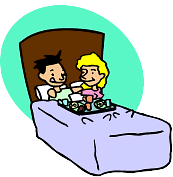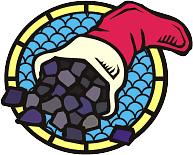Description
IRS Tax Audit Manual for the Bed and Breakfasts Industry

Is Your Peace Of Mind Worth A Little Bit Of Your Time?
In the time it takes to read 40 pages, you will know absolutely everything the Internal Revenue Service knows about the Bed and Breakfast industry and will use when performing a tax audit.
A charming bed and breakfast inn set in a romantic countryside location is fine for storybooks and travel brochures, but to an Internal Revenue Service audit agent, it is a retreat for potential unreported income and the perfect haven for a tax audit. In today’s market, anyone can find a bed and breakfast to suit his or her taste. It can range from one or two bedrooms in a modest residence to a room in a restored Victorian or a posh countryside retreat catering to the horsey set with a “room” in the barn for the horse.
Do you offer less than 20 guest rooms? Learn what the Internal Revenue Service has learned about your chances of success!
According to a study of the Yellow Pages by American Business Information, an Omaha based firm that tracks advertising in the Yellow Pages, growth in the bed and breakfast industry is up 33.1% and there were 4,457 listings in 1989 in the Yellow Pages. The average annual occupancy rates, per the Sonoma County Convention and Visitors Bureau, runs between 60% to 70% and growth in the industry shows an average annual increase of 5% to 10%.
Based on a 1988 national survey of innkeepers, bed and breakfasts with less than four guest rooms do not make money. With up to seven rooms, the average profit would be about 8% annually. Inns with 21 rooms can have a 29% annual return. If there is an absentee-owner the profit will go down and, according to the survey, nothing less is workable than inns with more than 20 guest rooms. Just as there are different kinds of bed and breakfast inns, the tax treatment of the inns will vary. One of the determining factors will be how many guest rooms are available for rent. There are many ways to audit bed and breakfasts. One of the keys to auditing a bed and breakfast is to contact various third parties for information. These state, local, or county agencies can be a wealth of information to the Internal Revenue Service while conducting an audit.
The Internal Revenue Service audit agent will also be paying close attention to any other services or products offered that are likely to produce additional income. Some of the more common products and services they will be looking for include: gift shops, taxi service, jams and jellies, homemade crafts, wines, and other items for sale to the guests. Some taxpayers misunderstand how much of the residence can be depreciated and what expenses can be deducted. Another common issue they will investigate is personal use and/or expenses, especially as it pertains to food, utilities and auto expenses. Are you prepared with the appropriate documentation to back up your answers to the following questions?
- Do you charge an extra fee if guests have pets?
- Do you allow children to stay free of charge?
- Do you charge for cancelled reservations?
- Do you receive tips or other gratuities?
- Do you ever barter for goods or services?
- Do you sell items such as jams, jellies, maps, wine, books, etc.?
If you’re willing to invest a little bit of your time, you will have all of the information you need to be ready when the IRS Agent makes a reservation at your bed and breakfast inn.
TABLE OF CONTENTS
- OVERVIEW… 1
- PROCEDURES 2
- AUDIT QUESTIONS 4
- RESEARCH 8
- ARTICLES AND STATISTICS 9
- LIST OF ISSUES 14
- THIRD PARTY INFORMATION 20
- BIBLIOGRAPHY 38



